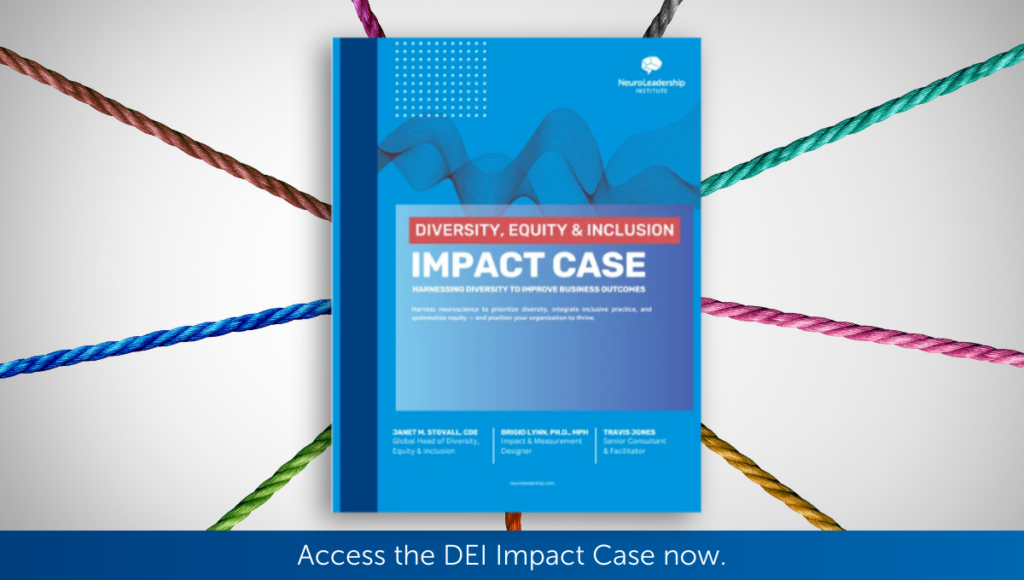The world of work is rapidly changing, and with it, the landscape surrounding diversity, equity, and inclusion (DEI) initiatives. Leaders are challenged as never before to do more with less, adapt to emerging technology, and prevent employee burnout while upholding accountability. Amid economic concerns, divisive rhetoric, and worries about legal challenges, some leaders may be tempted to put new DEI initiatives on the backburner in favor of short-term survival.
But in these challenging times, harnessing diversity has never been more important for improving business outcomes, according to NLI’s latest white paper, “Diversity, Equity & Inclusion: The Impact Case.” Authors Janet M. Stovall, CDE; Brigid Lynn, Ph.D., MPH; and Travis Jones explain that doing the right thing and achieving business success are not mutually exclusive. On the contrary, NLI’s three-pronged approach of prioritizing diversity, habituating inclusion, and building equity into systems enhances problem-solving, improves performance, and creates a more just, sustainable work environment for all.
NLI’s DEI Impact Case goes beyond theory to encourage organizations to develop an actionable, sustainable, and scalable plan for weaving DEI into the fabric of their organization. The white paper suggests practical actions organizations can take to apply the Impact Case, such as prioritizing diversity by tying it directly to business goals, building habits of inclusion, and systemizing equity through policies and procedures.
Although it can be difficult to conclusively link DEI efforts to complex business outcomes, organizations can partner with experts who understand the neuroscience of behavior change to conduct research and develop metrics to gauge DEI results. These experts can offer neuroscience-based training on bias mitigation, as well as identify bias in processes such as hiring systems and performance reviews. To learn more about how your organization can create a truly diverse, equitable, and inclusive workplace that drives both business results and positive social change, download NLI’s white paper, “Diversity, Equity & Inclusion: The Impact Case,” for free here.






